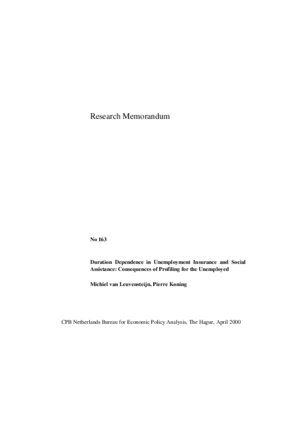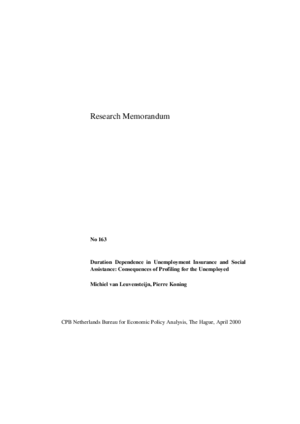Duration dependence in unemployment insurance and social assistance; consequences of profiling for the unemployed
Ook 'kansrijke' werklozen bouwen snel afstand tot arbeidsmarkt op
We are sorry, unfortunately there is no English translation of this page.
On the one hand, this results from duration dependence at the individual level: unemployed job seekers may become discouraged, loose their working skills and become stigmatised by potential employers (‘pure' individual effects).
On the other hand, if there is variation between individual exit rates, there is dynamic sorting of the unemployed with low exit probabilities (‘sorting effects'). Based on Dutch micro-data of social assistance (SA) and unemployment insurance beneficiaries (UI) for 1989-1996, we investigate to what extent this so-called ‘negative duration dependence' is due to sorting effects, as well as ‘pure' individual effects.
The analysis suggests that after an unemployment spell of half a year, the decrease in the job finding rate for SA recipients can be attributed for 20% to 25% to sorting effects. After a three- to four-year period, the probability to find a job deteriorates further, but only due to individual duration effects. For UI recipients, similar results are found. From this, we conclude that profiling measures that target the inflow of unemployed with bad job prospects bear an important risk: unemployed that are initially classified as having good job prospects may also become long-term unemployed. Therefore, labor market policies should also focus on general measures, for example, by encouraging search activities of all workers that have spent a certain length of time in unemployment.

